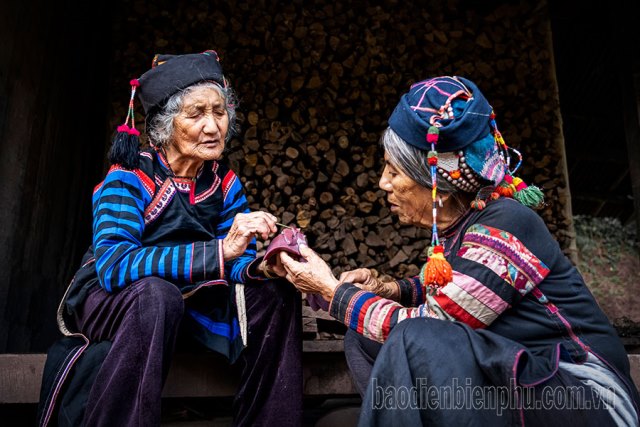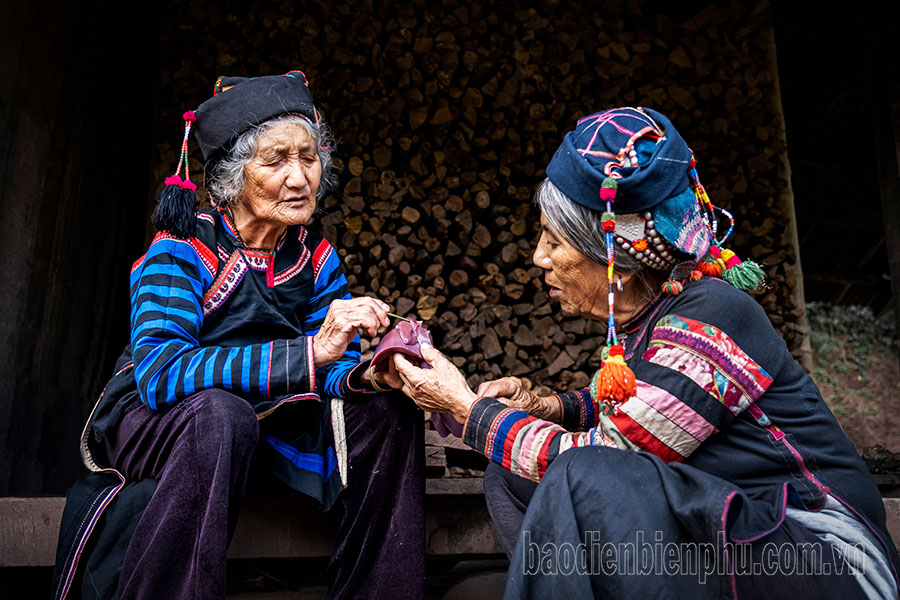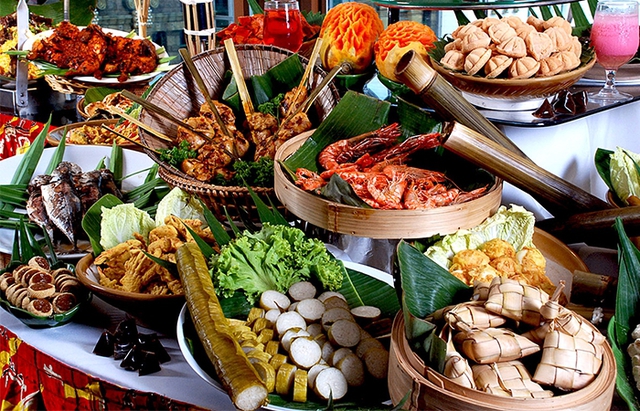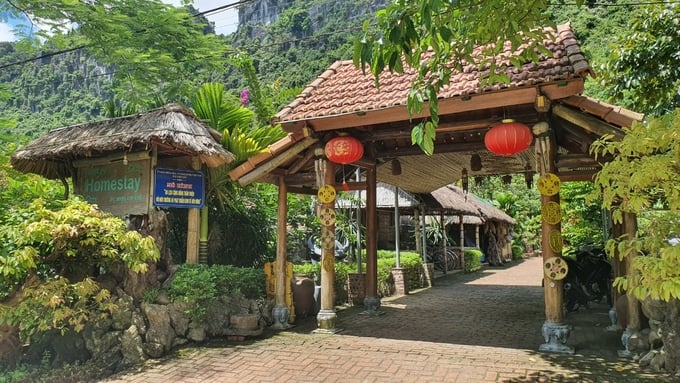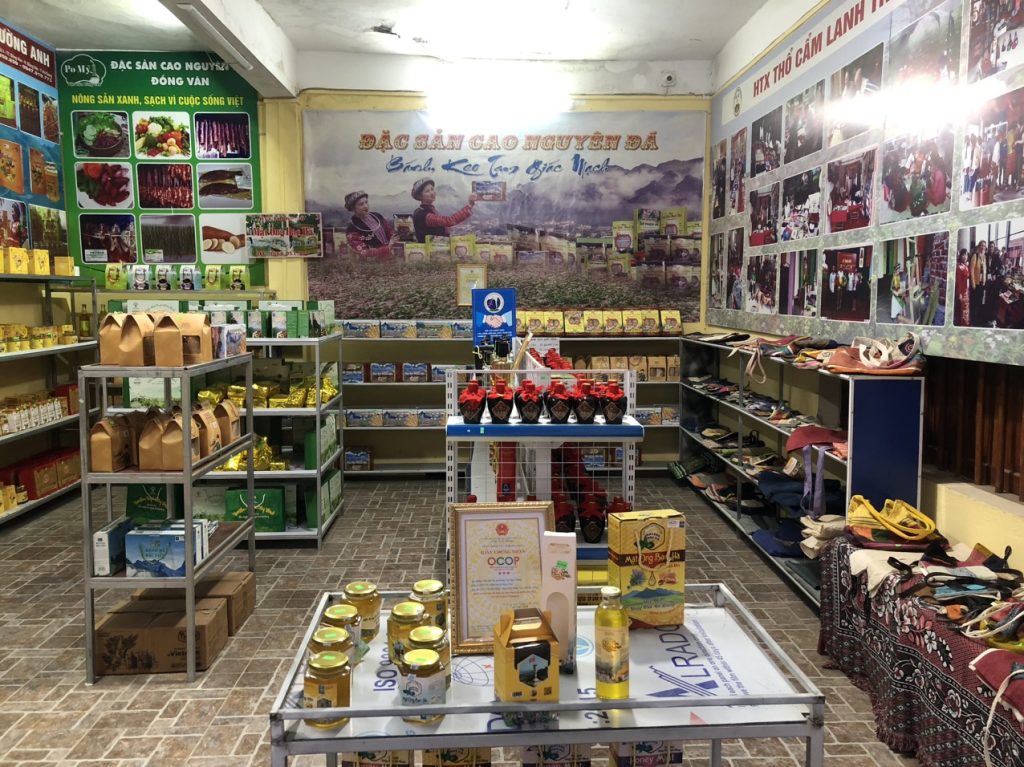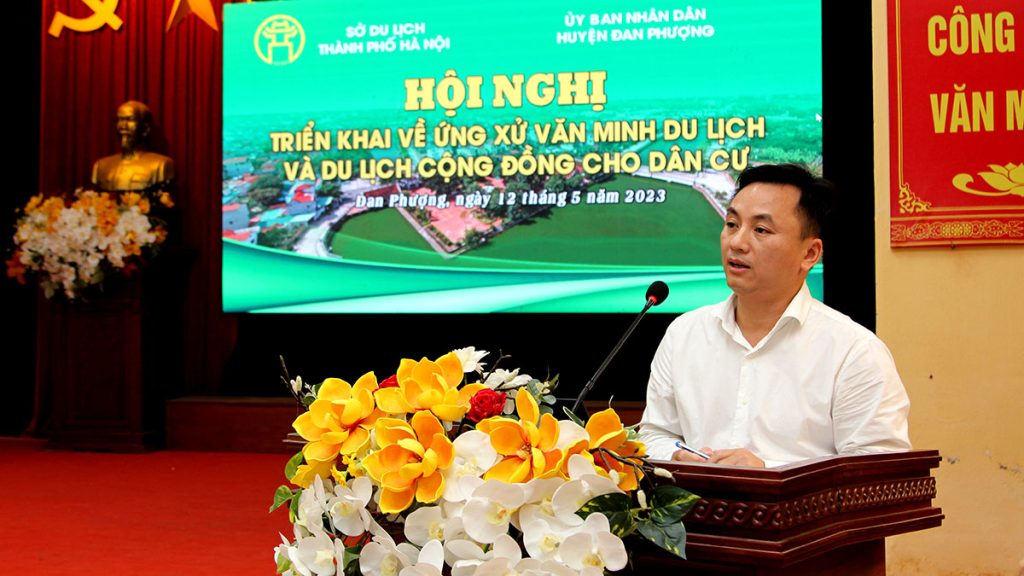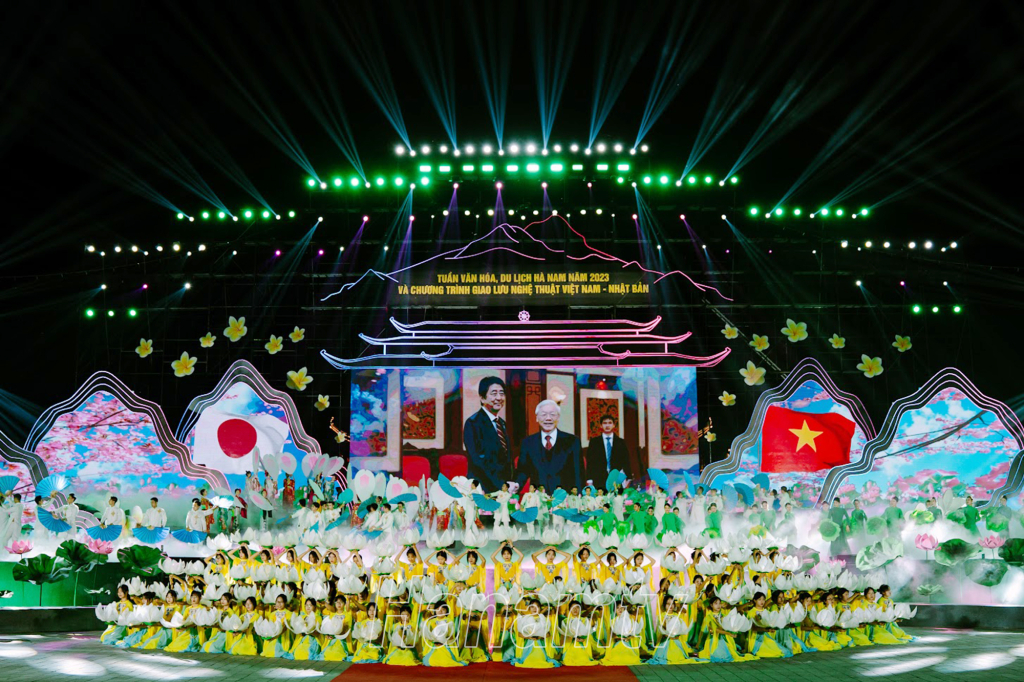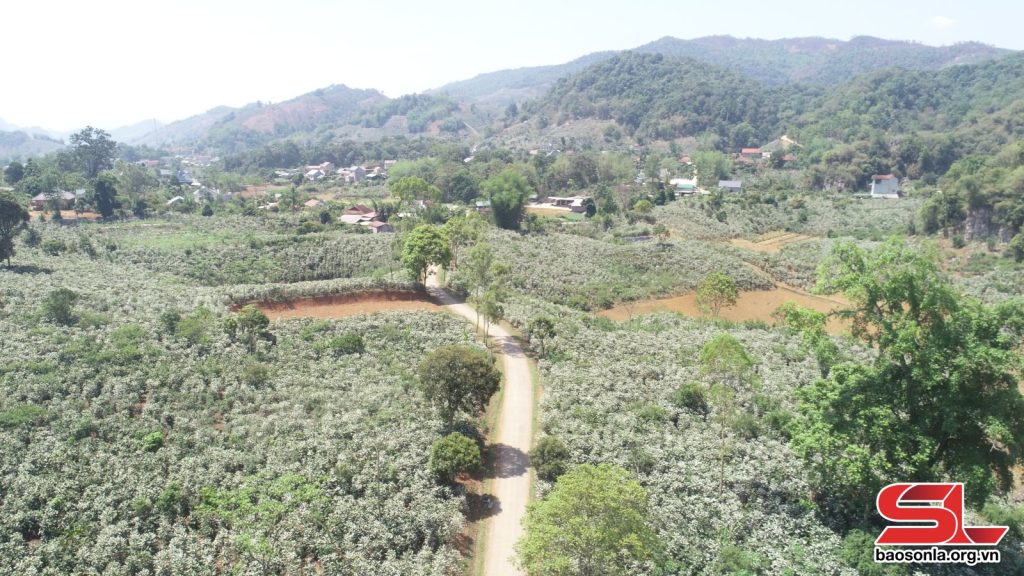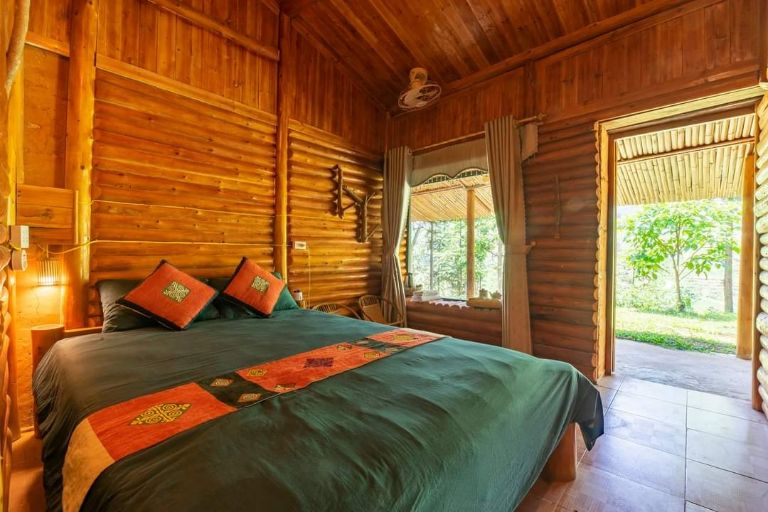Ethnic minorities in the province with diverse traditional cultures have potential for tourism development. In the photo: Ha Nhi women in Ta Ko Khu village, Sin Thau commune, Muong Nhe district perform the pig liver screening ritual during the traditional Tet holiday.
During the survey, the famtrip team went on field trips to places with tourism potential and cultural heritage in ethnic minority and mountainous areas in the following localities: Tua Chua, Tuan Giao, Muong Ang, Muong Nhe, Nam Po, Muong Cha, Muong Lay Town.
In Muong Lay town, the group stopped at Bac village, Lay Nua commune. This is the resettlement place after the construction of Son La Hydropower Plant of the White Thai ethnic community with a rich traditional cultural identity and unique color. What is impressive in the North village is the stilt houses along the hydroelectric lake, winding and reflecting on the lake, creating a unique and poetic beauty. The Northern village has the modern appearance of the neighborhoods while still retaining the characteristics of traditional villages, very attractive to tourists. In addition, the village is developing the craft of making chi chop and khau chop cakes into a traditional craft village recognized as OCOP products, bringing economic efficiency to the people. Similarly, Quan Chieng village, Na Lay ward also concentrates mainly on the White Thai ethnic group with many traditional cultural features preserved such as the Swallow Tail Boat Racing Festival, Kin Pang Then Ceremony, Thai spreading art… Especially the traditional stilt houses roofed with natural stone and the neat, airy planning along both sides of the lake. There are many large and beautiful houses in the village, capable of serving as accommodation for guests. People here also really want to do community tourism and currently have 1 family doing homestay… Both villages in Muong Lay town have the strength of traditional stilt houses that are well-planned, Therefore, the products that can be exploited here are community tourism with homestay services, experiencing indigenous cultural life, fishing cruises, sightseeing…
Long village is located in Toa Tinh commune, Tuan Giao district, about more than 5km from the old National Highway 6, the route passing through the old Pha Din pass. Long village is located in a relatively isolated valley. This is the living and cultural exchange space of about 100 Mong ethnic households. Through the group’s survey, traditional dances and customs are still preserved and passed down. The residential community here still retains the traditional walled house. With existing natural and cultural values, Long village has great potential to become a community tourism village. Regarding transportation infrastructure, accessing Long village is relatively convenient because the road from old National Highway 6 to Long village as well as internal roads in the village have all been concreted. This is an ideal condition for tourism development in the future. Besides, the main source of income of Long village is still agriculture, which highlights the products of medlar and Ngoc Linh ginseng. These products will play an important role in building a supply chain of supporting products and services for Long village when developing tourism in the coming time.
These are just a few surveyed villages that have the potential to build and develop appropriate tourism products, connect and form typical tourism programs of ethnic minority and mountainous areas of Dien Bien. There are many other addresses in districts: Muong Ang, Tua Chua, Muong Nhe, Nam Po… which are also full of tourism potential for future development. However, to “awaken” those potentials is not simple. First of all, Dien Bien’s road traffic system is affected by weather and natural disasters, so it degrades quickly. In remote and isolated communes, transportation is especially difficult; Accommodation facilities still have many shortcomings (small scale, concentrated mainly in Dien Bien Phu City, no high-end hotels, accommodation facilities in the districts are limited in quantity and quality) . Along with that, the system of food service establishments in districts and towns is still relatively limited and has not been paid attention or developed. The system of rest stops in districts and towns is almost non-existent. In fact, the travel routes between routes and tourist destinations are relatively far and many roads are being upgraded and repaired, so building and developing a rest stop system is a necessary requirement and a practical problem. set out for localities that need to be resolved. Not only that, entertainment services have been invested with socialized capital, but the quality of entertainment facilities is still low, professionalism is not high, so there are difficulties in solving problems. Extend the length of stay of guests… Therefore, when these difficult problems are solved, the tourism potential of ethnic minority areas of the province can be turned into real products and put into service for tourists, contributing to socio-economic development in the area./.
Source: Dien Bien Phu Online
Dien Bien Portal – dienbien.gov.vn

